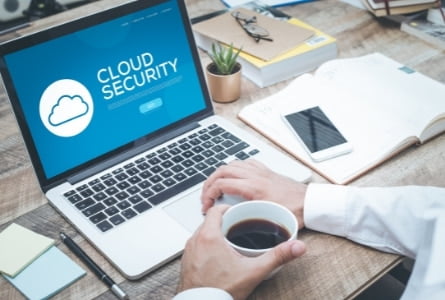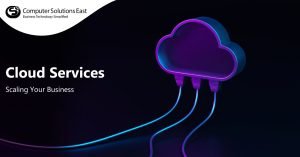How a hybrid cloud managed service provider can navigate the challenges of managing a hybrid work environment successfully?
The COVID-19 pandemic shook the whole country, driving many individuals out of their usual ranges of familiarity.’ A few things were simpler to conform to, while some different things ended up being significantly more testing. Over a year after organizations requested their employees to remain at home, numerous organizations are authoritatively taking in hybrid as a standard workforce model and have started recruiting in new geologies where there is no actual business presence.
As hybrid teams are a reasonably new phenomenon, directors think it is challenging to find the right balance. The workers likewise believe that it is exhausting to communicate with their partners adequately. Unlike a full-time in-office team where representatives sit and work intently, remote teams are trickier to deal with. Managers taking care of a full-time in-office group can hold offhand meetings. The equivalent is marginally harder to do with remote workers.

Hybrid working environments make new potential risk vectors in each of these spaces. Employees work from diverse networks, need access to a blend of cloud and on-premise assets, and are closer to utilizing their devices for work. Monitoring everything without having complete transparency is a significant concern for IT.
Since we’re entering a new hybrid workplace domain, there is no strong guide for dealing with this recent hybrid fluctuation dynamic. However, simplifying identity, access, and device management has been the main reason behind the development of the modern cloud directory, which reduces risk and further develops IT proficiency by bringing together these aspects of IT into a solitary platform based upon open guidelines; this can have a significant effect when numerous IT offices are short-staffed and working from tighter than-anticipated expenditure plans.
Following are some quick tips that a hybrid cloud managed service provider can successfully navigate the challenges of managing a mixed work environment.

#1. Smooth line of communication
When directors or supervisors require a team cluster in a Hybrid working setup, it becomes difficult compared to the pre-pandemic structure. A few people will be at the workplace while others will be at home. When you send an email, a remote employee probably won’t open asap because they might be dealing with some emergency household chores.
Things will be more disorganized, as employees won’t be logging in when they were supposed to be. To deal with this massive shift, communication should consistently be open. Everybody must be reminded to convey their accessibility to their respective teams or clients through status updates, emails, or other channels.
Group meetings should include some socialization and allow individuals to become acquainted with their co-workers. This is especially paramount for new employees or newly formed teams who have not benefited from ever meeting in person. In meetings involving mixed groups, now more than ever, it is essential to ensure that both in-person and remote employees have a positive experience.
#2. Keep it flexible
Particularly for the individuals working remotely, flexibility is a must for in-office employees. They may require their hours acclimated to before or later in the day, they might require additional time-off, or circumstances might emerge where they need to leave the workplace for a brief timeframe. In case you’re just flexible with your teammates, this will create a lot of resentment. Ensure that you’re dealing with your team and being flexible with all workers.
That being said, flexibility is particularly significant for the people who only work remotely for a short period because of the pandemic. These employees will be under massive pressure, and they need your flexibility and care.
Remember the sheer length of this COVID-19 cloud: an entire year of remote work has driven individuals to build up new schedules. Consider how employees are influenced by outside factors, including day-to-day environments, kids in virtual school, wellbeing concerns, passings of friends and family, and so forth. This is a short period, and we should be sensitive and sympathetic, particularly for the individuals who are as yet worried about the infection. Giving employees decisions for their “return to work” rather than assigning an order that everybody needs to enter the workplace is significant. It will have a critical effect on worker reliability.

#3. Productivity is the key
The worker productivity debate infiltrates each conversation around the hybrid work environment. One inquiry consistently comes up: Are in-office or remote work more useful?
The mass move to remote work has been a surprisingly good turn of events for this discussion, as it has given an enormous subject pool and research opportunities. While a pandemic isn’t an ideal opportunity to measure worker efficiency, it has permitted individuals to test working from home. There are solid indicators to propose that employee productivity isn’t influenced by remote work. In any case, the most balanced argument is that a few employees are more useful at home, others in the workplace. In the two cases, worker efficiency can be improved by identifying the difficulties confronting and giving suitable devices to overcome them.
#4 Device Management
Good communication will remove organizational success barriers and help people understand how individual team members work differently. Likewise, providing a proper home office setup will help ensure productivity. You need to provide the necessary device so that employees can do their jobs well when working remotely. Device security and access in a hybrid work environment can be a genuine concern for IT as they struggle with remote and in-office places. A single platform provides IT the confidence they need to know that they’ve got complete visibility. IT requires to have zero-touch remote onboarding that covers the initial configuration and software management, can automate policy enforcement at scale, and implement Zero Trust security by permitting conditional access based on hybrid environmental and device factors without asking the end-user to come to the workplace or an IT admin to work on a clients’ device.
And above all, IT requires to be able to manage Windows, Mac, and Linux equipment; the ability to remotely enroll, set up, and secure devices independent of their OS and track them from a single source of truth makes a more secure environment.
Hybrid workplaces appear to be the following status quo for work environments. Creating user identity, access, and device management easy, unified, and simple from a single cloud platform will ensure success for a hybrid workplace strategy.

#5. Security at utmost priority
One of the most significant pain points of supporting a hybrid workforce is managing all employees’ privacy, security, and safety. First, leadership should evaluate company policies and update them to accommodate the unique privacy requirements of hybrid workplaces. When it comes to security, companies should double down on endpoint protection. Since the pandemic began, there have been multiple cybercrimes. This can be especially challenging in a hybrid model where endpoint locations and network characteristics change. For example, many companies alarm employee logins from unknown places to help detect and prevent unauthorized access. In an environment where working from various locations becomes the new standard, information security teams need to rethink sorting out threat activity.
It also becomes harder to optimize variable resources such as VPN or firewall capacity. Companies with most applications already migrated to the cloud make sense to look at cloud-based firewalls and other security applications.
Companies have gained confidence that they can achieve high productivity and lower workplace costs by allowing employees in many roles to work remotely. COVID-19 jump-started this opportunity, but the many confirmed benefits will sustain it. As some employees begin to return to the office, the focus should now be on optimizing the security, infrastructure, and employee experience to reflect the changing needs of a hybrid workforce.
The vital link to a successful workforce is hiring top culture-fit talent. We know exactly how to find candidates who will thrive in a remote setting and an office space. Contact managed staffing services providers that can meet your unique hiring needs through flexible recruitment options, such as direct-hire, contact-to-hire, or contract staffing.
To learn more about how Computer Solutions East can help build your hybrid workforce, contact us today!


